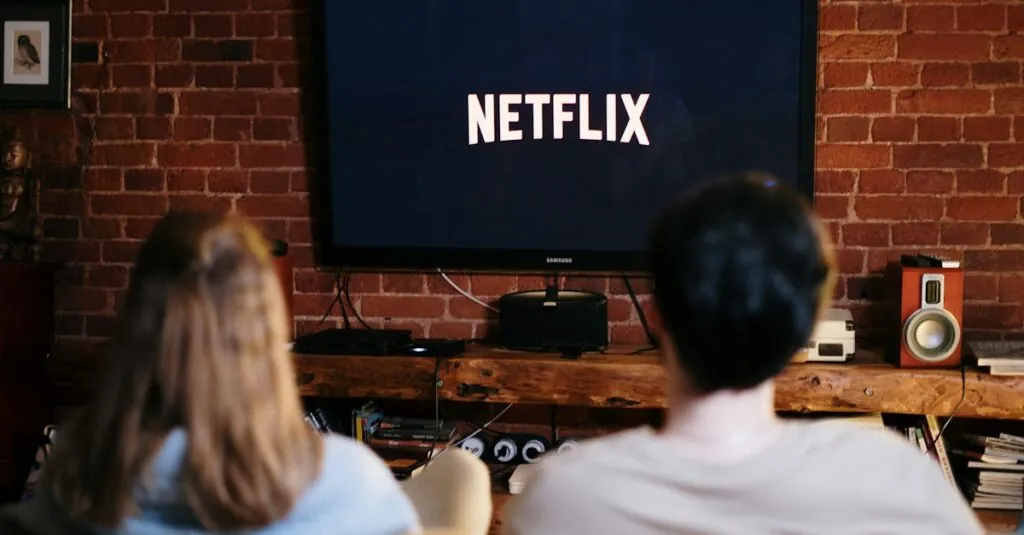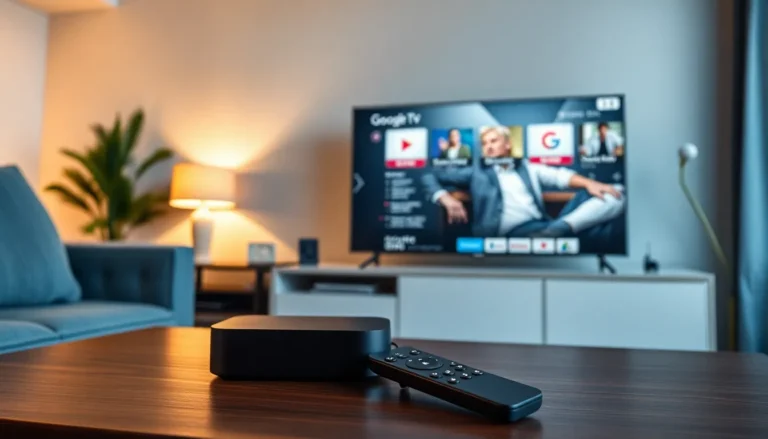In a world where binge-watching is practically a sport, hitting a streaming limit can feel like a cruel twist of fate. YouTube TV promises endless entertainment, but what happens when that pesky limit shows up, waving its finger like an overzealous librarian? It’s enough to make anyone question their life choices—like why they didn’t just stick to good old-fashioned cable.
Table of Contents
ToggleOverview of YouTube TV Streaming Limit
YouTube TV imposes specific streaming limits that can frustrate users seeking uninterrupted viewing. Understanding these limitations provides clarity on how they impact the overall viewing experience.
Definition of Streaming Limit
Streaming limits refer to the maximum number of simultaneous streams allowed on a single account. YouTube TV permits three concurrent streams at any given time. This means a household with multiple users needs to coordinate viewing activities to avoid interruptions. Each stream counts toward this limit, affecting shared viewing experiences, especially during high-demand moments like popular shows or live sports events.
Importance of Streaming Limits
Streaming limits play a critical role in managing network performance. By restricting concurrent streams, YouTube TV maintains a stable and high-quality viewing experience for all users. Limits also help protect content integrity, ensuring that users enjoy programming without excessive buffering or interruptions. Adhering to these streaming limits encourages users to plan their viewing schedules, fostering more strategic TV consumption, particularly in larger households where multiple tastes and preferences collide.
Current Streaming Limits on YouTube TV
YouTube TV implements specific streaming limits to enhance user experience. Understanding these limitations helps avoid frustration during peak viewing times.
Number of Simultaneous Streams
YouTube TV permits up to three simultaneous streams on a single account. This restriction can challenge families or groups trying to watch different shows at the same time. To illustrate, if one person watches a live sports event, the other two cannot stream a separate program. Planning viewing times is essential for larger households. In relation to other streaming services, this limit stands out as both a convenience and a constraint, especially when multiple users share an account.
Device Limitations
Device compatibility plays a role in streaming on YouTube TV. Users can stream content on various devices, including smartphones, tablets, smart TVs, and streaming devices. However, the platform limits the number of devices that can access the account simultaneously. Typically, only one device can be used to stream content when disconnected from the account. This limitation affects how users interact with the service, particularly during family gatherings or events when multiple devices might be needed. Ensuring only one device streams at a time can impact the overall viewing experience.
Factors Influencing Streaming Limits
YouTube TV’s streaming limits depend on several factors. Understanding these factors helps users navigate their viewing experiences better.
Account Type and Subscriptions
YouTube TV’s account type affects streaming accessibility. Standard accounts typically allow up to three concurrent streams. Premium subscriptions may offer different benefits or enhanced options. Users might choose upgraded plans for expanded viewing opportunities. Reviewing the features of each account type ensures informed decisions that match viewing preferences.
Regional Availability
Regional availability plays a crucial role in streaming limits. Content access may differ across geographic areas. Certain regions experience restrictions due to licensing agreements. Subscribers in these areas might face limitations not seen elsewhere. Checking regional policies allows users to align expectations with the available content.
User Experience with Streaming Limits
Users often find the three-stream limit on YouTube TV a manageable aspect of their experience. This policy encourages thoughtful viewing schedules, especially in households with multiple viewers. Families can strategize which shows to watch simultaneously, planning around individual preferences.
Positive Aspects
Streaming limits foster better sharing of viewing time among users. With three concurrent streams, family members can access their choices without too much conflict. Viewers appreciate that the platform maintains high-quality service, ensuring stable connections and minimal buffering. This limit also promotes family engagement as users can coordinate around popular events and shows, enjoying shared experiences together. Moreover, users benefit from the ability to stream on various devices, enhancing flexibility in choosing where to watch.
Challenges Faced by Users
Despite some advantages, users encounter issues with streaming limits that can disrupt viewing. Conflicts arise in larger households where members often want to watch different content at the same time. Competing interests can lead to frustration, particularly during live sports or season finales when many viewers are active. Additionally, disconnecting devices limits accessibility; only one user can be on the account when a device is offline. Even regional licensing restrictions can exacerbate these challenges, causing uneven access to desired content based on geographic location.
Future of YouTube TV’s Streaming Policies
YouTube TV’s streaming policies may evolve, reflecting industry trends and user feedback. Users anticipate enhancements to accommodate growing viewing habits.
Potential Changes and Updates
Upcoming changes could expand concurrent streams for subscribers. User feedback suggests a desire for increased flexibility, especially in larger households. Enhanced premium subscription options might offer more simultaneous streams. It’s also possible that YouTube TV introduces tiered plans, allowing users to select packages based on their viewing needs. Monitoring competitors may influence these potential updates as the streaming market grows increasingly competitive.
Impact on Users and Content Providers
Adjustments to streaming limits might significantly influence user experiences. An expansion in concurrent streams could reduce frustration for families sharing an account. Greater flexibility may lead to increased satisfaction and retention rates. Content providers, however, could face challenges balancing quality and access demands. Ensuring network reliability remains crucial as changes affect usability. Providers must navigate licensing agreements closely to maintain content offerings while expanding access.
Navigating the streaming limits of YouTube TV can be a balancing act for users, especially in households with diverse viewing preferences. While the three-stream limit encourages thoughtful planning and sharing, it can also lead to conflicts during peak viewing times. Users appreciate the flexibility and quality of the service but may still encounter challenges, particularly during live events or in larger families.
As the streaming landscape continues to evolve, there’s potential for YouTube TV to adapt its policies to better meet user needs. Enhancements in subscription options could provide more flexibility for those seeking to maximize their viewing experience. Keeping an eye on these developments will be crucial for users looking to optimize their entertainment choices.








